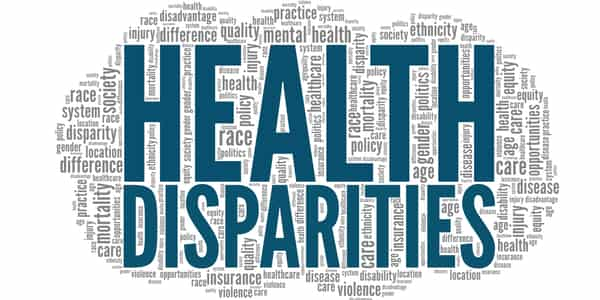Diseases occur as a result of a disorder in sequence or function in humans. There are several causal factors to this which may either be internal (genetics or immune system) or external (pathogen). Types of diseases include infectious diseases, hereditary diseases, deficiency diseases and physiological diseases.
Disease disparities based on race and gender has been a subject of interest in health studies for many decades. While it is essential to acknowledge these disparities, it is equally crucial to understand that they are the result of a complex interplay of genetic, environmental, socioeconomic, and healthcare factors.
Diseases With Racial Disparities
Sickle Cell Anaemia: An inherited disorder that results from the misshapen state of the red blood cells leading to them dying early, leading to a shortage of healthy red blood cells. The sickly cells aggregated and sequestrate at the walls of blood vessels thus blocking blood flow and causing pain to the individual (sickle cell crisis). Sickle cell anaemia is a classic example of a disease with a significant racial disparity. Although people from all races are susceptible, a higher prevalence has been reported in people of African, Mediterranean, and South Asian descent.
Cystic Fibrosis: This is caused by a fault gene inherited from the parent leading to cells having difficulty in moving water and salts across the cell wall leading to an eventual build up of thick, sticky mucus in the body. In contrast, it is more common in white populations especially those of European descent.
Parkinson’s Disease: This debilitating neurological disorder affects about 50% more men than women. This may be due to lower oestrogen levels when compared with those in women, as the hormone protects brain function by activating specific proteins or free radicals. Also head traumas and X linkage of genetic risk factors are possible reasons for increased risk in men.
Type 2 Diabetes: Also known as non- insulin dependent diabetes is a chronic ailment which results from the inability of the body cells to produce or utilize insulin hence sugar molecules remain in the blood instead of moving into the body cells. The risk of developing type 2 diabetes is higher amongst Blacks, African Americans and South Asians.
Hypertension: Hypertension or high blood pressure shows significantly high racial disparities. One in every 2 black mature adults in the United States will develop hypertension even earlier in life than for other races. The disease is also influenced by nature of diet, bodyweight, physical activity and lifestyle.
Breast Cancer: While breast cancer affects individuals of all races, there are variations in its occurrence and outcomes. For example, although it is slightly more commonly diagnosed in white women, the disease is more aggressive in black women, perhaps due to quality of health care and the poor culture of routine testing.
Diseases With Gender Disparities
Breast Cancer: Breast cancer is a disease that primarily affects women. This is due to biological and genetic factors. This highlights the importance of breast cancer screening and awareness campaigns.
Prostate Cancer: Prostate cancer, on the other hand, primarily affects men. Genetic make-up is responsible for the higher incidence of prostate cancer. It is highly treatable, following early detection.
Osteoporosis: Osteoporosis is characterised by reduced bone mineral density or decreased bone mass. It is more common in women, particularly those who are past menopause. Also, the fact that females typically have smaller bone structures than men increases its prevalence.
Autoimmune Diseases: These are a variety of illnesses brought on by the immune system’s reaction to self-antigens, which causes tissue damage or dysfunction over time. Compared to the Y chromosome, more genes come from the X chromosome, which women have two copies of while men only have one. Consequently, there is a greater chance that these disorders will manifest in women. Women are more likely to suffer from autoimmune disorders like lupus and rheumatoid arthritis.
Depression: The gender gap in mental issues widens significantly with an increase in age. Adolescent girls and adult women have much more reported cases of depression and anxiety than their male contemporaries. Studies have disclosed that changes in mood correlate with hormonal changes which are influence by the menstrual cycle.
[ad unit=2]






